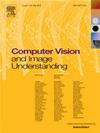Uncertainty estimation using boundary prediction for medical image super-resolution
IF 4.3
3区 计算机科学
Q2 COMPUTER SCIENCE, ARTIFICIAL INTELLIGENCE
引用次数: 0
Abstract
Medical image super-resolution can be performed by several deep learning frameworks. However, as the safety of each patient is of primary concern, having models with a high degree of population level accuracy is not enough. Instead of a one size fits all approach, there is a need to measure the reliability and trustworthiness of such models from the point of view of personalized healthcare and precision medicine. Hence, in this paper, we propose a novel approach to predict a range of super-resolved (SR) images that any generative super-resolution model may yield for a given low-resolution (LR) image using residual image prediction. Providing multiple images within the suggested lower and upper bound increases the probability of finding an exact match to the high-resolution (HR) image. To further compare models and provide reliability scores, we estimate the coverage and uncertainty of the models and check if coverage can be improved at the cost of increasing uncertainty. Experimental results on lung CT scans from LIDC-IDRI and Radiopedia COVID-19 CT Images Segmentation datasets show that our models, BliMSR and MoMSGAN, provide the best HR and SR coverage at different levels of residual attention with a comparatively lower uncertainty. We believe our model agnostic approach to uncertainty estimation for generative medical imaging is the first of its kind and would help clinicians decide on the trustworthiness of any super-resolution model in a generalized manner while providing alternate SR images with enhanced details for better diagnosis for each individual patient.
基于边界预测的医学图像超分辨率不确定性估计
医学图像的超分辨率可以通过几个深度学习框架来实现。然而,由于每个患者的安全是首要考虑的问题,拥有具有高度人群水平准确性的模型是不够的。我们需要从个性化医疗保健和精准医疗的角度来衡量这些模型的可靠性和可信度,而不是一刀切的方法。因此,在本文中,我们提出了一种新的方法来预测超分辨率(SR)图像的范围,任何生成的超分辨率模型都可以使用残差图像预测给定的低分辨率(LR)图像。在建议的下限和上限范围内提供多个图像可以增加找到与高分辨率(HR)图像精确匹配的概率。为了进一步比较模型并提供可靠性分数,我们估计了模型的覆盖率和不确定性,并检查覆盖率是否可以以增加不确定性为代价来提高。在LIDC-IDRI和Radiopedia COVID-19 CT图像分割数据集的肺部CT扫描上的实验结果表明,我们的模型BliMSR和MoMSGAN在不同剩余注意水平下提供了最佳的HR和SR覆盖率,不确定性相对较低。我们相信,我们对生成医学成像的不确定性估计的模型不可知方法是同类中第一个,将帮助临床医生以广义的方式决定任何超分辨率模型的可信度,同时提供具有增强细节的替代SR图像,以便为每个患者提供更好的诊断。
本文章由计算机程序翻译,如有差异,请以英文原文为准。
求助全文
约1分钟内获得全文
求助全文
来源期刊

Computer Vision and Image Understanding
工程技术-工程:电子与电气
CiteScore
7.80
自引率
4.40%
发文量
112
审稿时长
79 days
期刊介绍:
The central focus of this journal is the computer analysis of pictorial information. Computer Vision and Image Understanding publishes papers covering all aspects of image analysis from the low-level, iconic processes of early vision to the high-level, symbolic processes of recognition and interpretation. A wide range of topics in the image understanding area is covered, including papers offering insights that differ from predominant views.
Research Areas Include:
• Theory
• Early vision
• Data structures and representations
• Shape
• Range
• Motion
• Matching and recognition
• Architecture and languages
• Vision systems
 求助内容:
求助内容: 应助结果提醒方式:
应助结果提醒方式:


